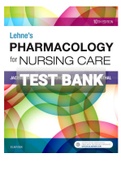Resume
Summary ICAEW Corporate Reporting 2024 - CR Open Book Notes 2024 (Achieved 78%) - ACA Advanced Level
- Cours
- Établissement
ICAEW Corporate Reporting 2024 - CR Open Book Notes 2024 (Achieved 78%) - ACA Advanced Level This document is a set of exam ready notes to be taken into the Corporate Reporting (CR) ICAEW ACA Advanced Level Exam. Got 78% in CR using these notes. They provide answers to all scenarios that ...
[Montrer plus]












